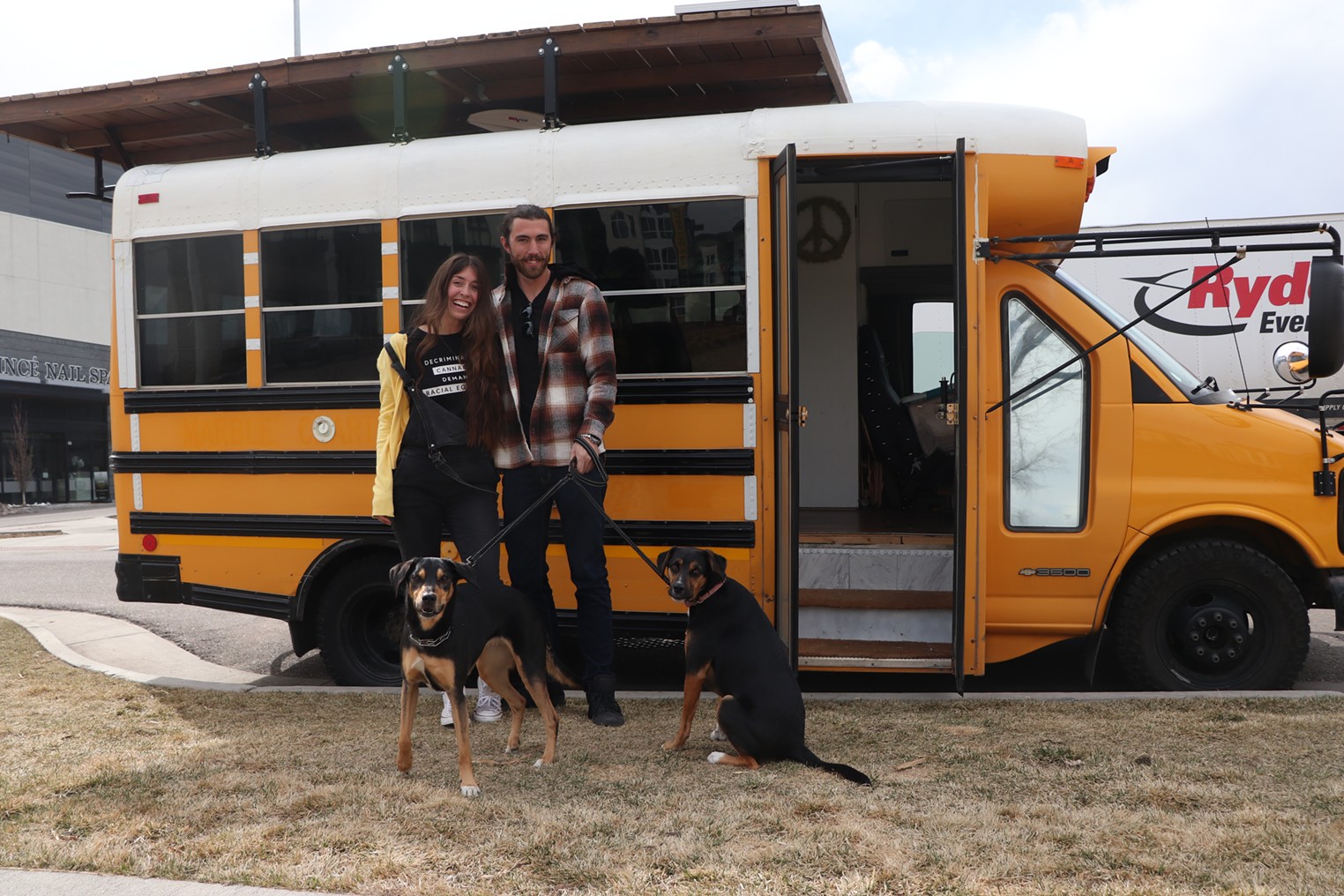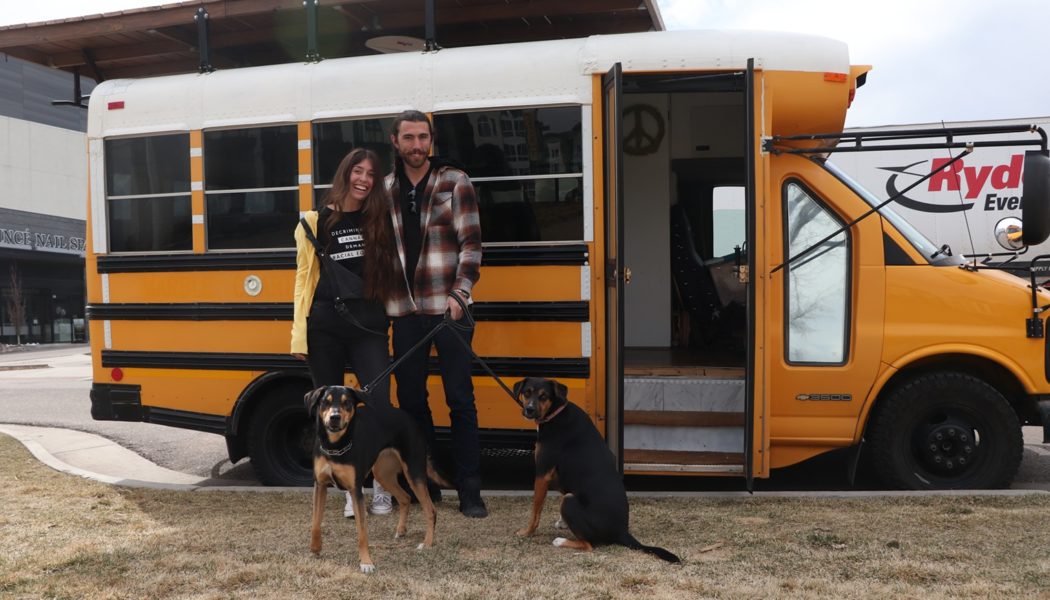
Across the street from a parked semi, behind the AMC movie theater on Colorado near the corner of Eighth and Ash streets, there’s an old mini school bus — normal-looking to most, aside from a large wooden platform covering the roof and the old mountain bikes hanging off the back.
On the sidewalk, Kelsey Keserich and Luke Bender tend to their two dogs and chat up people passing by with their own pets.
All within view: retail stores, a parking garage, an empty commercial lot, a park, a boarded-up building, and a block of three-bedroom condos currently listed on Zillow for as much as $1.7 million.
Walking inside the school bus feels like watching a POV video you might see on TikTok or Instagram Reels. A blackboard calendar hangs over a wooden countertop; across the aisle, a modern-looking kitchen sink under a stained glass window. In the back of the bus, two couches face each other; at night, they turn into a bed.
Van life — which has been around in some form or another for decades — reached peak trendiness during the pandemic following the normalization of working from home. Those who have stuck with it have graduated into calling it “nomadic living.”
Following the lifestyle’s intense popularization in recent years, cars as a housing option have emerged as a legitimate, on-the-table option for even those in mainstream society. For others, it’s a sad necessity.
The nomadic community — or community of people living in cars, at least — is still full of ’60s-style free-love hippies, as well as people who might prefer to live in a real house if they had the financial means. But those individuals have been joined by swaths of remote-working tech workers, in-person employees parking and living at their gyms or offices during the week, retirees, and people like Keserich and Bender, who have decided to travel full-time between jobs.
Keserich and Bender both moved to Denver in 2015 from different places in the Midwest. They met a few years later while working at the Mercedes-Benz dealership in Glendale. The idea of living in a bus or van had always appealed to each of them; Bender says his parents had lived in a bus before he was born, so he was familiar with the idea.
A road trip in Oregon, where the couple rented a Jeep and drove down the coast, wound up being the nudge they needed to begin carving out their own nomadic path.
“We can totally do the road life,” they remembered saying to each other.
the main appeal of the lifestyle, however, was the financial and personal freedom. “We wanted control of our time [and of] our life again,” explains Keserich.
“Luke was paying close to $3,000 on a mortgage on a house he was never in,” she continues. “He worked six days a week, bell to bell in sales — all day. It wasn’t making sense.”
Bender adds: “It’s like, you’re making good money, but you’re spending all of it, anyway.”
To make matters worse, Bender says he had an hour-long commute to and from work each day. Plus, “it was 45 minutes to get to town or wherever you wanted to go.”
The main goal of moving to van life, the couple says, was to create a better and more sustainable work-life balance — and they didn’t see any other living situation that could provide that. “This is affordable housing in this market,” Keserich says of living in a bus.
The catalyst came when when Keserich was laid off from her job at the beginning of the pandemic. Her financial situation was “scary,” she recalls. “I mean, I lost my salary, my cushy salary job.”
They found a reasonably sized — not too big and not too small — school bus for a good price in Marble. They sold their house and took to the road, with money from the sale covering gas, insurance and food.
Keserich and Bender often return to Denver to visit friends and check their mail at a P.O. box they have in town. They’re in the Mile High City this weekend to display their bus at the 2023 Denver Home Show, which serves as an opportunity to show off their lifestyle choice as legitimate.
“[It’s] really cool to be respected as a home in a place where Luke owned a home and where I resided for a long time,” Keserich says.
The Denver Home Show’s Michelle Ellis says the couple’s way of living acts as a great outline for others also looking to size down.
“There are a lot of people in retirement who are looking into tiny homes, van life; that’s a growing population,” Ellis says. Often, people’s financial situations are pushing them toward low-cost housing options such as buses and vans, she explains.
“As interest rates continue to go up, that really is impacting people’s decisions. And a lot of people, when they’re entering retirement, are on fixed incomes,” Ellis says. “Now they’re not making any money on their investments because the market is being impacted so badly…people are having to get creative to make the money that they have stretch further.”
Viral online van-life content and TV shows depicting the lifestyle “have piqued a lot of people’s interest,” she adds.
The Denver Home Show runs through March 26 at the National Western Complex. Keserich and Bender will be offering tours of their bus at 11 a.m. and 3 p.m. Saturday, March 25, and again at noon on Sunday. Find out more here.









